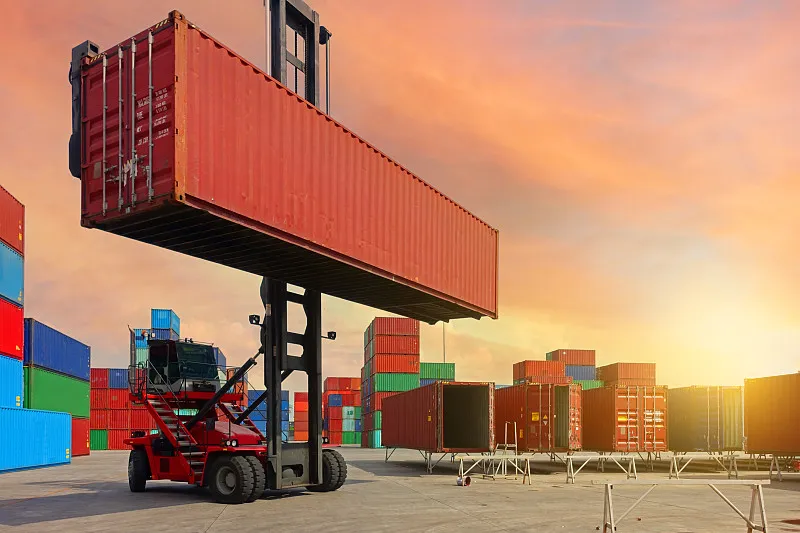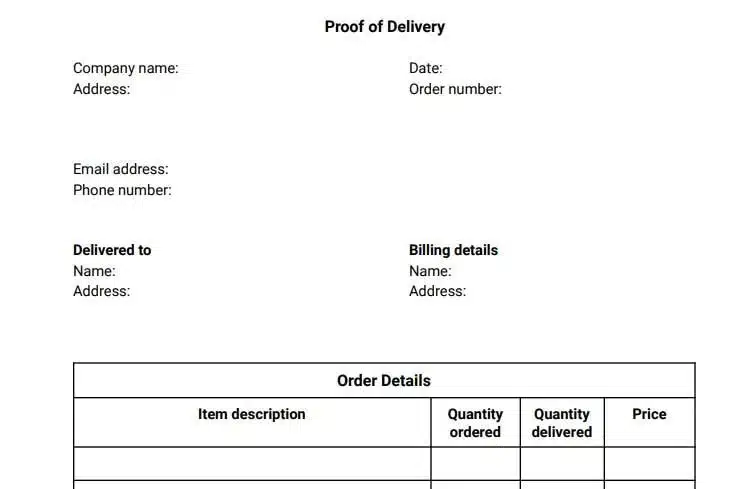Since 2013, China has been Thailand’s largest trading partner, with bilateral trade surpassing $127 billion in 2023. China is Thailand’s top import source and its second-largest export destination.
Understanding the cost of container shipping from China to Thailand is essential for businesses looking to streamline their logistics operations. These costs can vary based on several factors, including the type of container, the origin and destination ports, and fluctuations in the global freight market.
Regarding bulk shipments, sea freight is generally the most economical option. In this article, we’ll break down the typical transportation costs for 20-foot and 40-foot containers and cover key insights to help you navigate the shipping process more effectively.

Container Shipping from China to Thailand
Container shipping from China to Thailand is mainly conducted via sea freight, with two primary options: Full Container Load (FCL) and Less than Container Load (LCL). Major departure ports in China include Shanghai, Guangzhou, Shenzhen, Tianjin, and Ningbo. On the Thai side, key destination ports are Bangkok Port, Laem Chabang Port, and Songkhla Port. Transit times can vary depending on the port pair, but shipments typically take between 7 and 17 days.
Estimated transit time to ship a container from China to Thailand
The transit time for sea freight from China to Thailand varies based on the specific departure and arrival ports and any transhipment points along the route. Below are estimated shipping times for some of the most commonly used routes:
| Origin (China) | Destination (Thailand) | FCL 20-foot (Days) | FCL 40-foot (Days) | LCL (Days) | Air Freight (Days) |
|---|---|---|---|---|---|
| Hong Kong | Bangkok | 5 | 5 | 8 | 1 |
| Shanghai | Chiang Mai | 5 | 5 | 8 | 1 |
| Guangzhou | Phuket | 5 | 5 | 8 | 3.5 |
| Chongqing | Pattaya | 5 | 5 | 8 | 4 |
| Shanghai | Bangkok | 5 | 5 | 8 | 4 |
| Tianjin | Laem Chabang | 5 | 5 | 8 | 5 |
| Shenzhen | Songkhla | 5 | 5 | 8 | 4.5 |
Cost of Shipping 20ft and 40ft Containers from China to Thailand
The cost of shipping containers from China to the UK depends on the type of container, but is also affected by many factors:
- Port of departure and port of destination: The cost of shipping from different Chinese ports will vary. Some ports may have additional port charges.
- Route: If you choose a direct route, the cost is higher, but the shipping time is shorter. If you transfer ships in the middle, the cost may be relatively lower, but the shipping time will be longer.
- Cargo type and additional charges: Different types of cargo (such as dangerous goods, refrigerated goods, etc.) may add additional charges.
The following are specific cost references between different ports:
| Container shipping service from China to Thailand | Type of container | Ocean freight rates from China to Thailand |
|---|---|---|
| How much does it cost to ship a container from Shanghai China to Thailand | 20 foot container FCL 40 foot container FCL | average price from: $1150 20FT average price from: $1550 40FT |
| How much does it cost to ship a container from Shenzhen China to Thailand | 20 foot container FCL 40 foot container FCL | average price from: $750 20FT average price from: $1750 40FT |
| How much does it cost to ship a container from Ningbo-Zhoushan China to Thailand | 20 foot container FCL 40 foot container FCL | average price from: $1000 20FT average price from: $1850 40FT |
| How much does it cost to ship a container from Hong Kong China to Thailand | 20 foot container FCL 40 foot container FCL | average price from: $850 20FT average price from: $1550 40FT |
| How much does it cost to ship a container from Guangzhou China to Thailand | 20 foot container FCL 40 foot container FCL | average price from: $950 20FT average price from: $1950 40FT |
| How much does it cost to ship a container from Qingdao China to Thailand | 20 foot container FCL 40 foot container FCL | average price from: $1250 20FT average price from: $2050 40FT |
| How much does it cost to ship a container from Tianjin China to Thailand | 20 foot container FCL 40 foot container FCL | average price from: $1250 20FT average price from: $2050 40FT |
| How much does it cost to ship a container from Dalian China to Thailand | 20 foot container FCL 40 foot container FCL | average price from: $1350 20FT average price from: $2350 40FT |
| How much does it cost to ship a container from Xiamen China to Thailand | 20 foot container FCL 40 foot container FCL | average price from: $950 20FT average price from: $1750 40FT |
| How much does it cost to ship a container from Yingkou China to Thailand | 20 foot container FCL 40 foot container FCL | average price from: $1250 20FT average price from: $1850 40FT |
Below is a breakdown of typical container shipping costs from China to various regions, which can help businesses estimate logistics expenses more accurately:
Cost of Shipping 20ft and 40ft Containers from China to Iran
Shipping Costs for 20ft And 40ft Containers from China to UAE
Cost of Shipping 20ft and 40ft Containers from China to Nigeria
Cost of Shipping 20ft and 40ft Containers from China to Turkey

Key Factors That Influence Container Shipping Costs
Several variables can impact the cost of shipping containers from China to Thailand. Understanding these factors can help businesses better manage their logistics budget:
- Ports of Origin & Destination: Rates vary depending on the ports involved. For example, shipping from Shanghai to Laem Chabang may differ significantly from shipping between Qingdao and Bangkok’s Klong Toey port.
- Carrier Selection: Different shipping lines offer varying pricing structures, service levels, and reliability, which can affect overall cost.
- Market Demand & Seasonality: Shipping costs often rise during peak periods, such as in the lead-up to major holidays or during seasonal surges in global trade.
- Fuel Prices: Fluctuating fuel costs impact surcharges like Bunker Adjustment Factor (BAF) and Fuel Adjustment Factor (FAF), which are passed on to shippers.
- Container Type: Standard dry containers are more cost-effective than specialized ones. For instance, refrigerated (reefer) or oversized containers come with a much higher price tag.
- Transit Time & Routing: Direct shipping routes are usually faster but more expensive than transshipment routes, which involve multiple stops.
- Incoterms: International Commercial Terms (Incoterms) define who is responsible for shipping costs and risks. Choosing the right Incoterms can significantly affect your total shipping expenses.
Customs Documentation for Shipping from China to Thailand
When shipping containers from China to Thailand, preparing the correct documentation is essential to ensure smooth customs clearance. Missing or inaccurate documents can lead to delays, additional costs, or shipment rejection. Below is a comprehensive guide to the key documents typically required for customs clearance in both China and Thailand:
Key Shipping Documents
- Commercial Invoice: This invoice outlines transaction details between buyer and seller, including product descriptions, quantities, unit and total prices, Incoterms, and payment terms. It forms the basis for customs valuation and taxation.
- Packing List: Provides detailed information on the contents and packaging of the shipment, including the number of boxes or pallets, weight (gross and net), dimensions, and packaging type. Customs use it to verify the shipment contents.
- Bill of Lading (B/L): A transport contract issued by the carrier or its agent and a document of title required for both customs clearance and cargo release in Thailand. It can be either an original B/L or a telex release.
- Import License: Required for certain controlled goods such as pharmaceuticals, food products, firearms, specific chemicals, and machinery.
- Certificate of Origin (C/O)
- FORM E: Essential for claiming reduced tariffs under the ASEAN-China Free Trade Agreement (ACFTA).
- General C/O: Needed if FORM E is unavailable or not applicable for preferential treatment.
- Insurance CertificateRequired if the shipment is insured.
- Proof of Payment / Letter of Credit: Often requested to verify the commercial transaction.
Important Reminders
- Accuracy and Consistency: All documentation must match in detail. Company names, product descriptions, quantities, and values must be consistent across all documents. Discrepancies can delay clearance or incur penalties.
- Prepare in Advance: Some licenses and certificates (like FORM E or import permits) take time to acquire, so start early to avoid delays.
- Work with Experts: Partnering with a knowledgeable freight forwarder or customs broker can save time and prevent costly mistakes. These professionals stay up-to-date on regulatory changes and can manage the customs process on your behalf.
- Special Product Considerations: Always check Thailand’s specific import requirements for regulated goods. Non-compliance can lead to shipment denial or destruction.
Step-by-Step Guide to Container Transportation from China to Thailand
- Inquiry & Quotation: Contact a freight forwarder and provide details about the goods (name, weight, volume, number of pieces), origin/destination, desired shipping date, container type, trade terms, etc., to obtain a detailed quotation.
- Booking: After accepting the quotation, confirm the booking with the freight forwarder or shipping company and provide shipper/consignee information, cargo details, etc. The freight forwarder will reserve space with the shipping company.
- Arrange Trucking & Loading:
- The freight forwarder or you can contact a trucking company to pick up empty containers from the yard and deliver them to your factory or warehouse at the specified time.
- You are responsible for completing loading within the specified time and ensuring the cargo is securely fastened. Take photos to document the loading process.
- After loading, the trucking company transports the container back to the designated port yard (CY – Container Yard).
- Export Customs Declaration: Prepare the required export documents (invoice, packing list, contract, customs declaration authorization, etc.) and submit them to the customs broker (typically arranged by the freight forwarder) for export declaration to the Chinese customs authorities. After customs clearance, the container can be loaded onto the vessel.
- Pay local charges and obtain the draft B/L: Pay the local charges at the port of origin. The shipping line or freight forwarder will provide a draft Bill of Lading (B/L) for your review.
- Confirm B/L Information: Carefully review all information on the B/L (shipper, consignee, notify party, cargo description, markings, weight, volume, vessel name and voyage, port, etc.), and notify the freight forwarder to issue the original B/L or telex release once confirmed.
- Sea Transport: The container is loaded onto the scheduled vessel, and the sea transport journey begins. You may request the freight forwarder’s estimated arrival time (ETA).
- Prepare Import Documents: Before the goods arrive at the port, the consignee or their designated customs clearance agent must prepare all necessary import documents (bill of lading, invoice, packing list, certificate of origin (if required for tariff preferences), import license (if required), etc.).
- Pay Destination Charges & Customs Clearance: Upon arrival at the destination port, pay local charges (THC, document handling fees, etc.). Submit the import declaration to Thai Customs, pay duties, and VAT. Customs inspection (if required) and release.
- Arrange Pick-up & Delivery: After customs clearance and release, contact the trucking company with the Delivery Order (D/O) to pick up the container from the port yard and transport it to the final delivery address.
- Unloading and Return Empty Container: The consignee arranges to unload. After unloading, the empty container must be returned to the designated yard per the shipping company’s requirements.

Why Use a Hongocean Freight Forwarder?
Hongocean freight forwarder for shipping between China and Thailand provides numerous advantages:
- Expertise: Freight forwarders are well-versed in the complexities of logistics, including the documentation requirements and customs procedures in both China and Nigeria.
- Network & Negotiation Power: With established relationships with carriers, freight forwarders can secure better rates and ensure reliable space on ships or flights, helping optimize costs and schedules.
- Cost Efficiency: Freight forwarders can identify optimal shipping routes and suggest cost-saving strategies, such as consolidating smaller shipments via Less than Container Load (LCL) or Groupage services.
- Documentation Handling: Freight forwarders manage all necessary paperwork, reducing the risk of errors and delays that could complicate your shipping process.
- Customs Brokerage Services: Many freight forwarders offer or arrange customs clearance, ensuring smooth and efficient importation procedures.
- Troubleshooting: In case of unexpected issues during transit or clearance, freight forwarders are skilled in problem-solving and minimizing disruptions to your shipment.
- End-to-End Service: They offer door-to-door solutions, handling every step of the shipping process—from pickup and transport to customs clearance and final delivery—making the process easier for the shipper or importer.
- Mode Flexibility: Freight forwarders provide various transportation options (sea, air, FCL, LCL, and specialized containers) tailored to your needs and shipment requirements.




